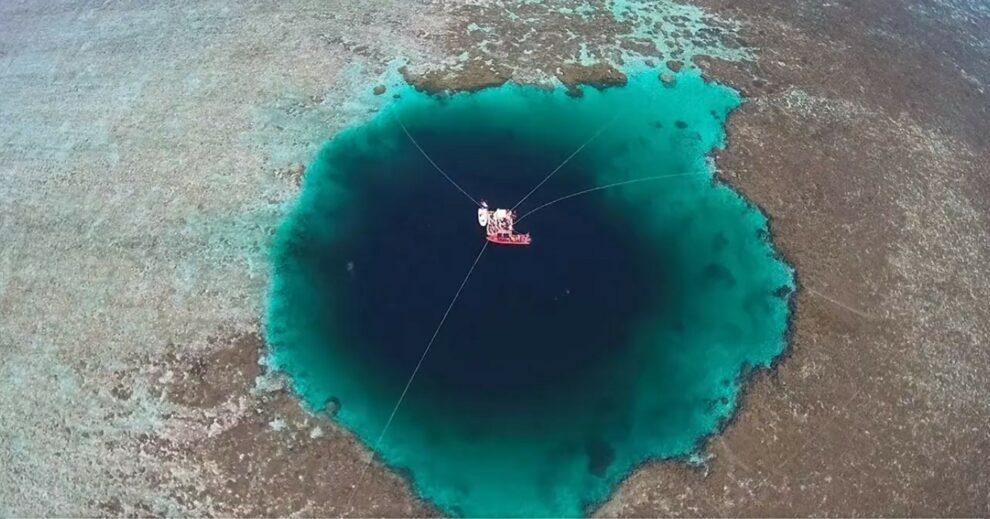The science world was left stunned when researchers revealed the discovery of a massive blue hole in Mexico. This second-largest blue hole has the potential to offer insight into the possibility of life on other planets.
Although the colossal sapphire sinkhole was initially found in 2021, its documentation only surfaced recently in the scientific journal Frontiers In Marine Science.
Massive blue hole discovery in Mexico poses intriguing questions for scientists worldwide
It is probable that this is “the deepest blue hole in the area,” stated the scientists who were associated with the public research center El Colegio de la Frontera Sur (Ecosur).
Blue holes, which are also referred to as Karst formations in scientific communities, are essentially underwater caves that are vertical in shape. They were formed over several millennia through the glacial melt during the Ice Age, as per Discovery.com.
These vast underwater structures frequently have a depth of several hundred feet and can extend an equal or larger distance horizontally, according to scientists.
The most recent cobalt cave network was found in Chetumal Bay off the Yucatan Peninsula and was then scrutinized and sampled by means of scuba divers, undersea sonar, and other techniques.
According to Live Science, this colossal blue lagoon has been named Taam ja’, which translates to “deep water” in Mayan, and spans an expanse of 147,000 square feet, with a depth of 900 feet.
According to the research, this “makes it the second deepest known blue hole in the world,” with the Dragon Hole in the South China Sea believed to extend down around 980 feet.
The walls of this deep blue crater shield the water from tides, resulting in a completely motionless current, creating an aquatic anomaly that seems to be stuck in time.
Are blue holes a portal to the past and beyond?
According to Discovery.com, the tidal movement results in the blue holes being “sharply stratified by a thin layer of freshwater on the surface that prevents oxygen from reaching the dense saltwater below.”
However, despite the inhospitable conditions, blue holes are thriving marine oases with organisms that have adapted to living in an oxygen-depleted environment.
Interestingly, this lack of oxygen has the side effect of effectively preserving fossils, which can potentially assist scientists in identifying species that have long since gone extinct.
In fact, submarine sinkholes have the potential to serve as gateways to both space and time.
In 2012, researchers exploring blue holes in the Bahamas discovered bacteria in the deep recesses of the caves, where no other life existed. This could potentially provide insights into the types of organisms that may survive on other planets.
One of the most concerning aspects of blue holes is the insight they provide into human activities.
In 2018, while exploring the enigmatic “Great Blue Hole” in Belize, plastic bottles were discovered at the bottom of the 410-foot-deep structure.
“The real monsters facing the ocean are climate change and plastic,” said billionaire Virgin founder Richard Branson, who was a part of the expedition.
